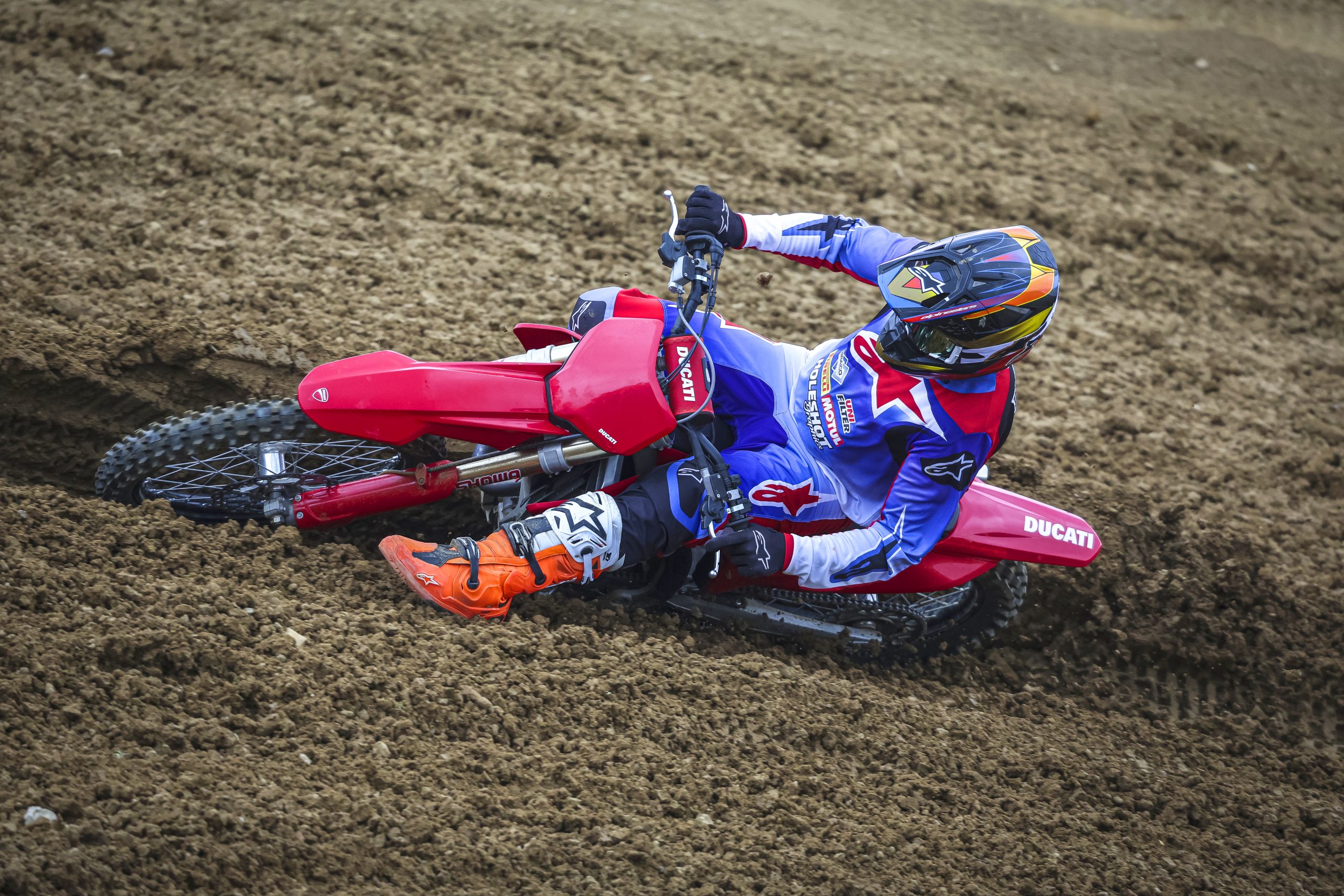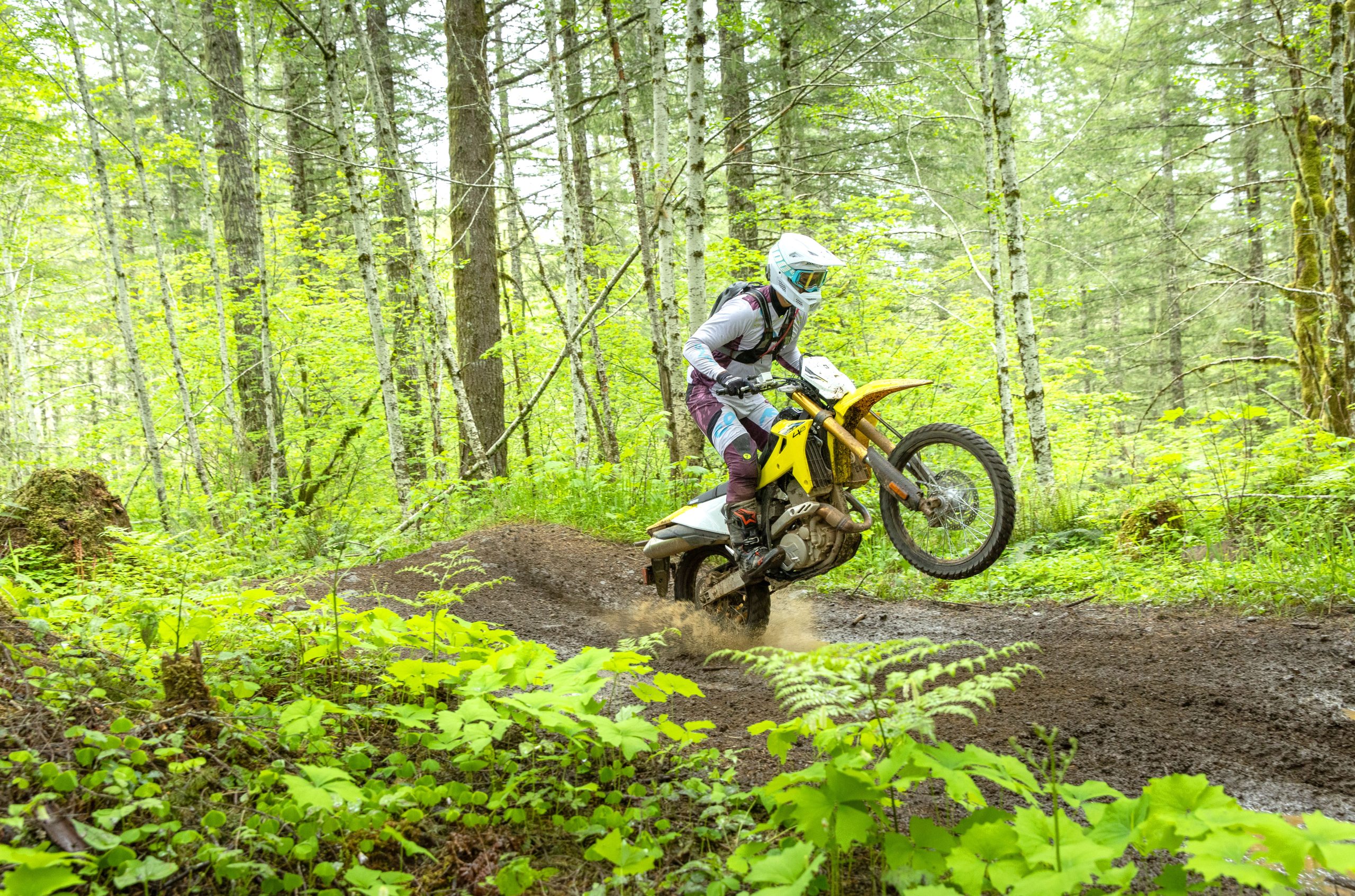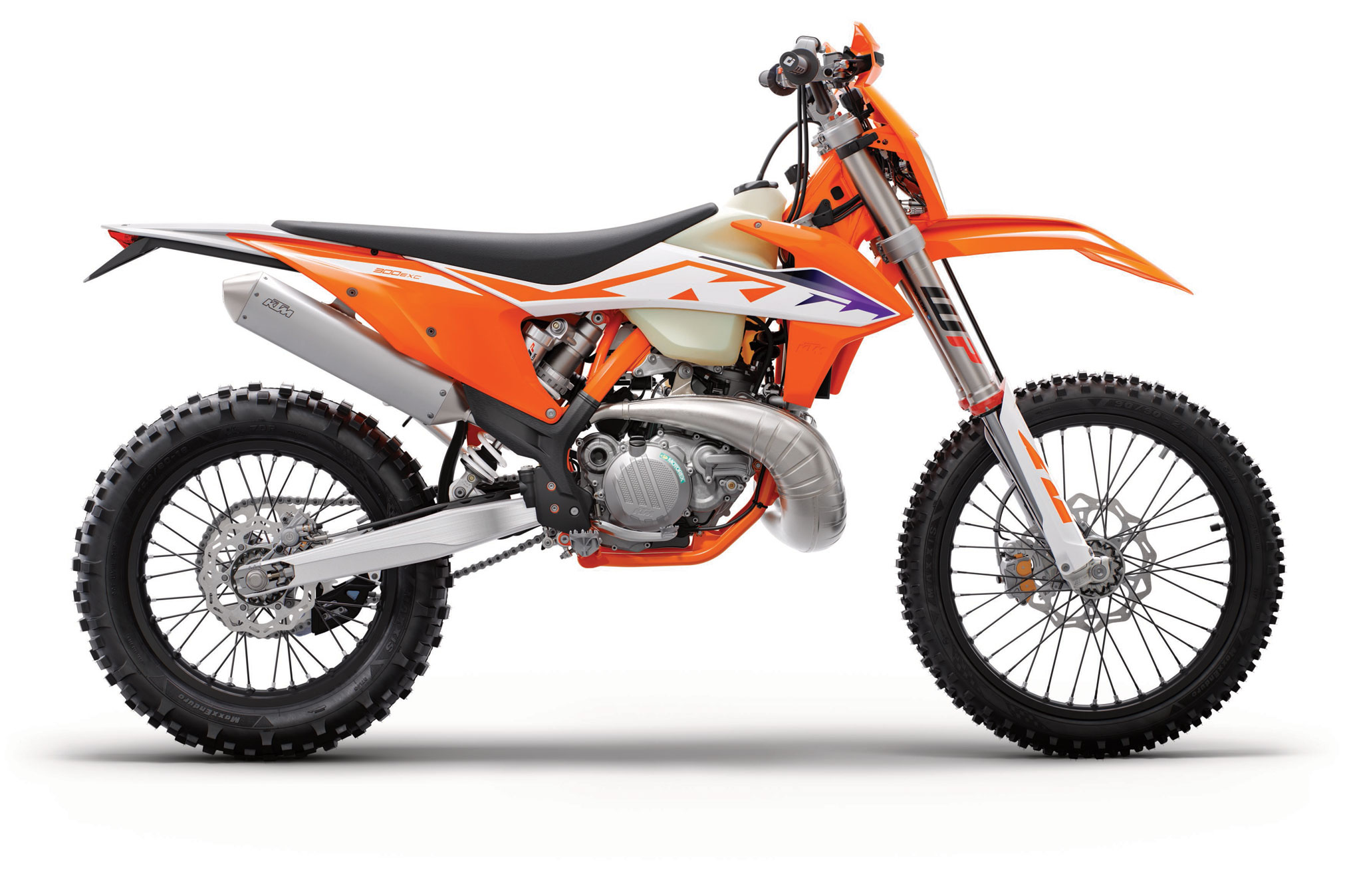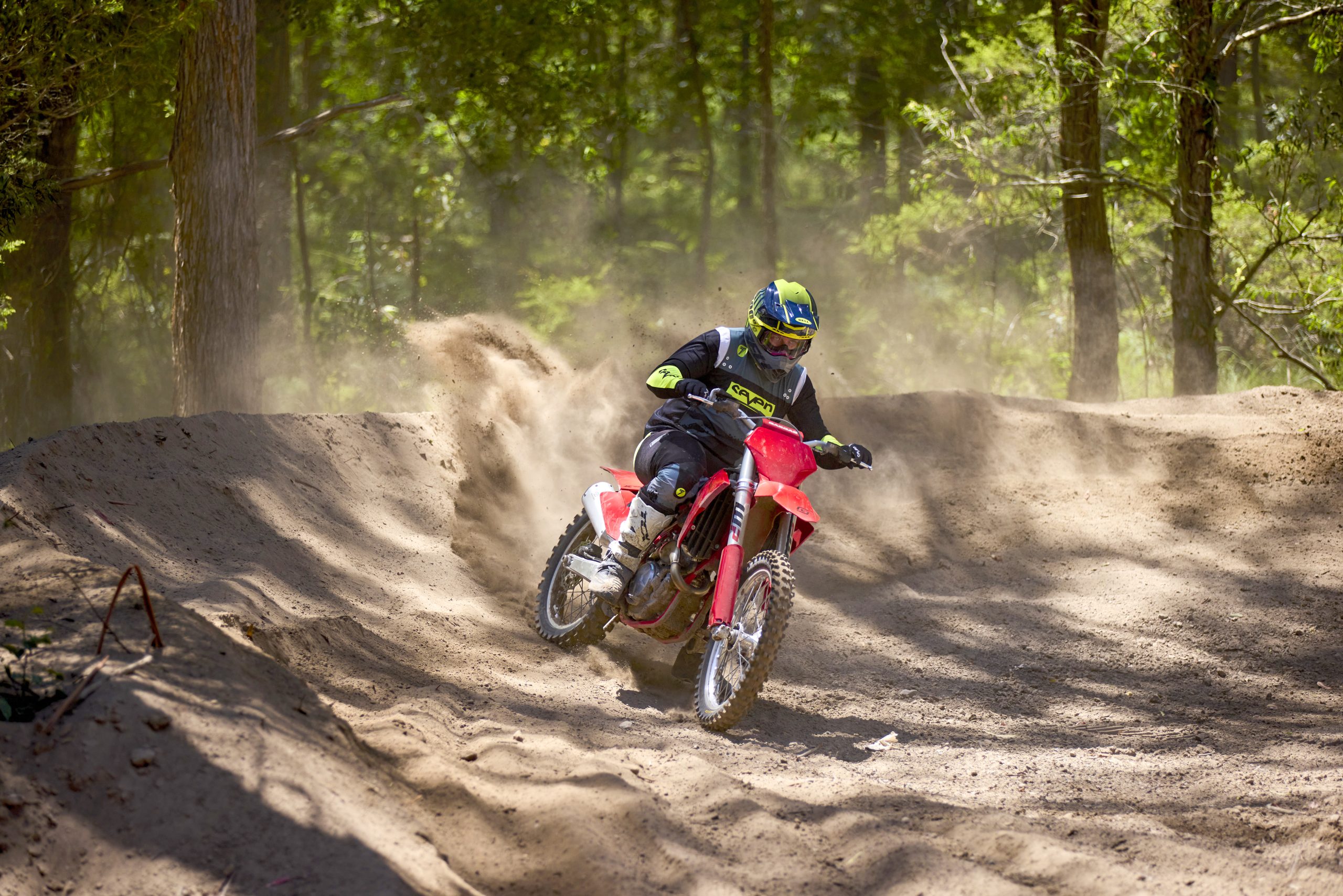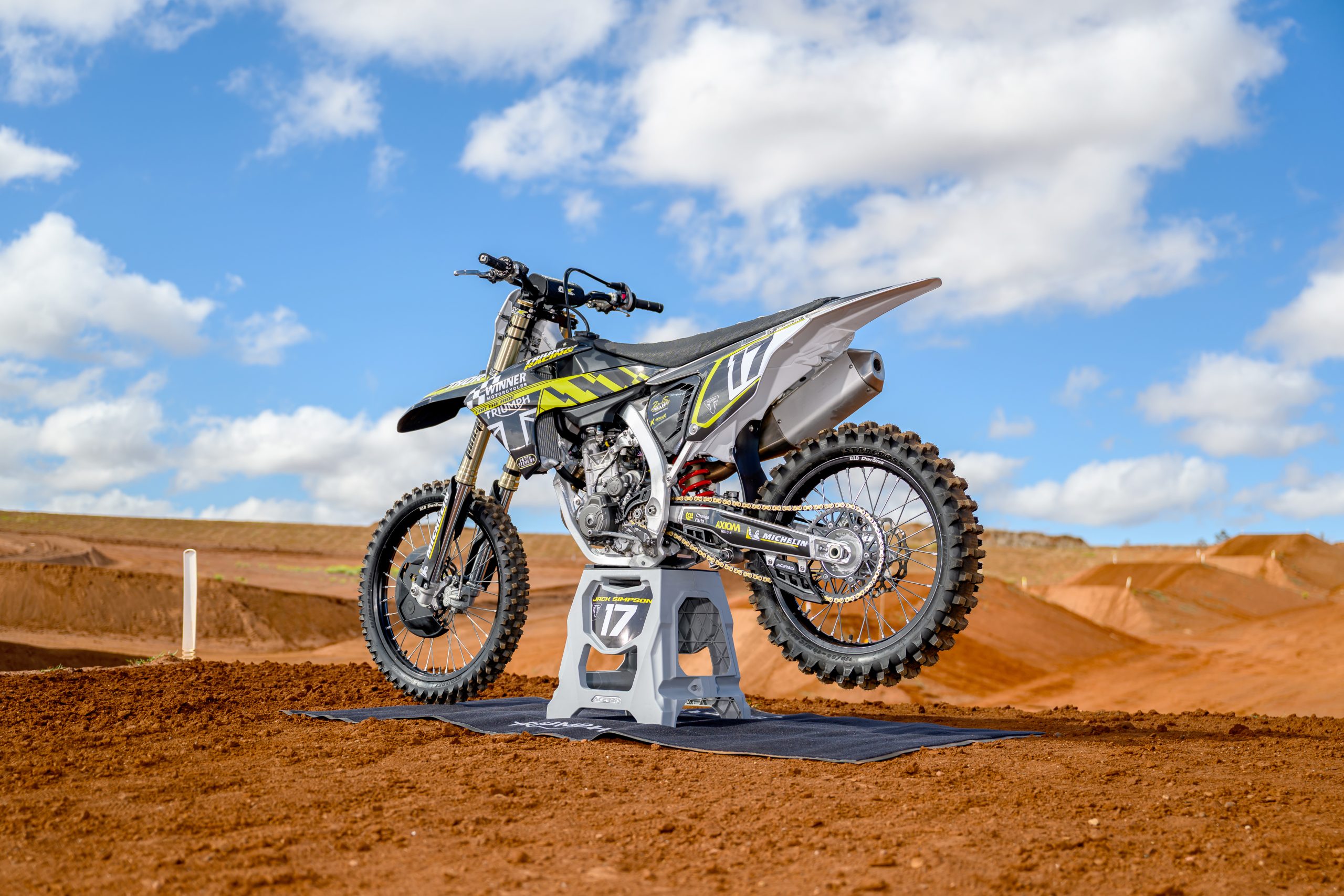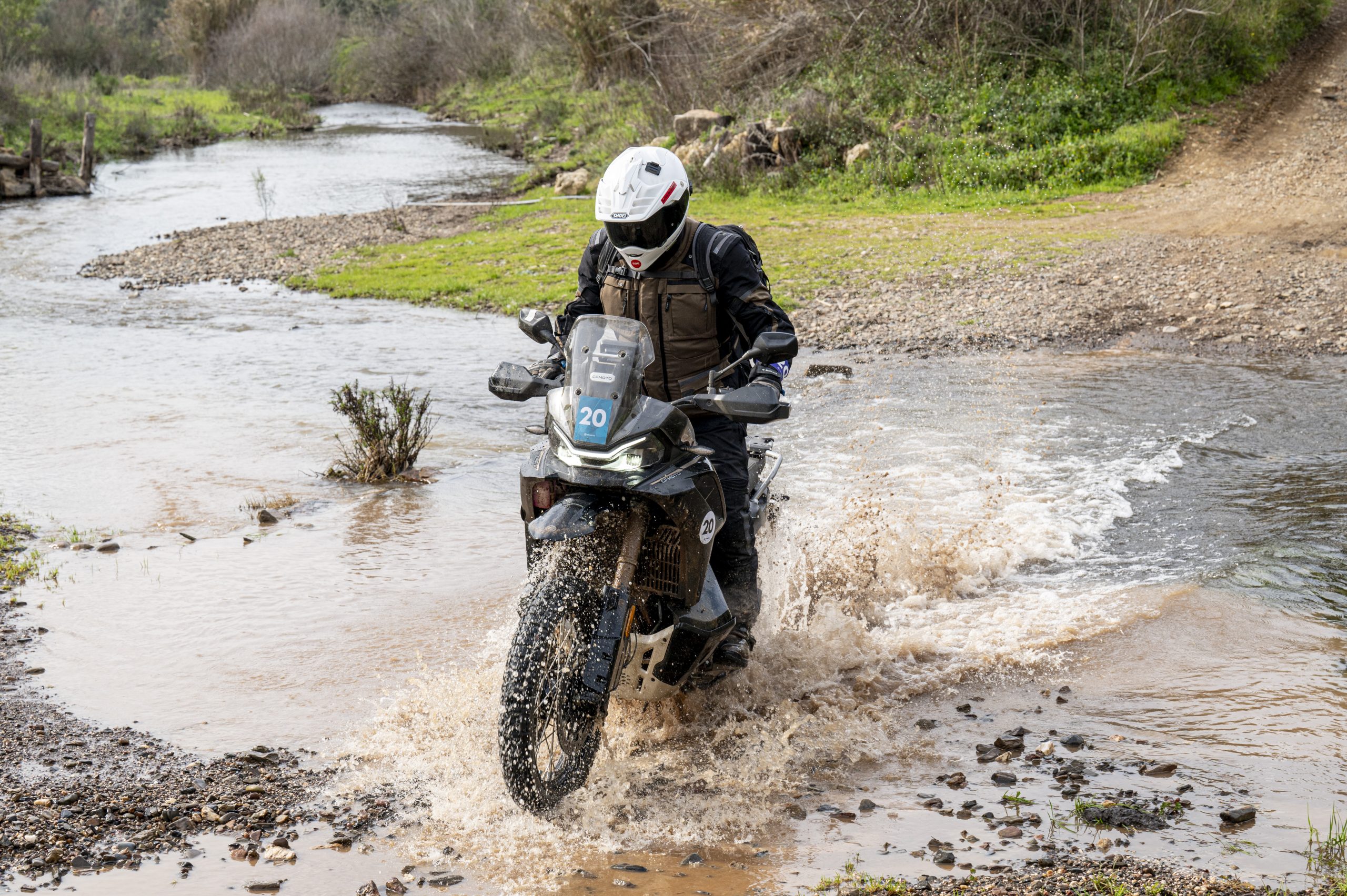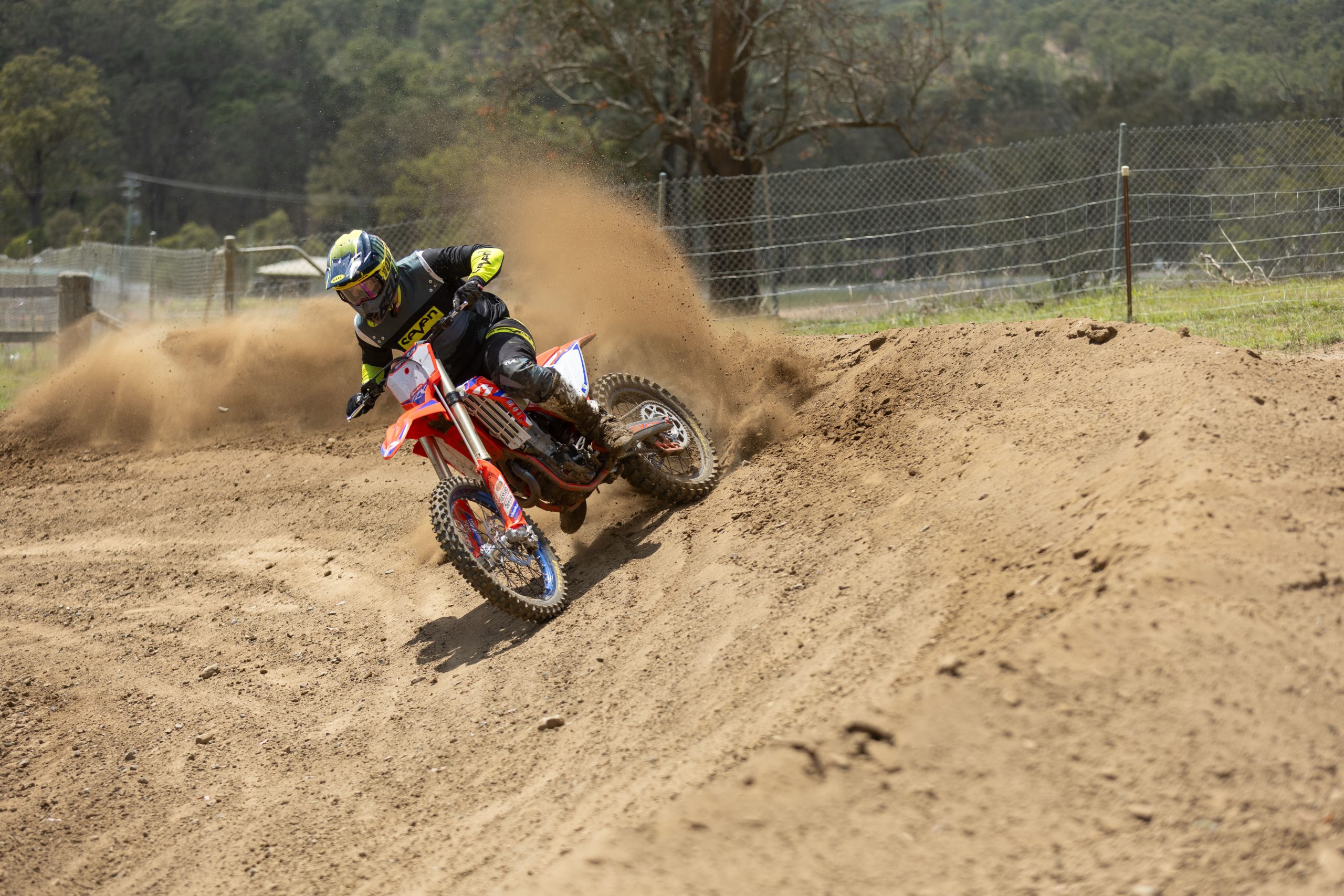There were no four-strokes, no fuel injection, traction control, holeshot buttons, lock-on handgrips, hydraulic clutches, upside-down forks or gripper seatcovers to be found within a million miles of an MX track. Even liquid cooling and disc brakes were in their infancy.
But the pits were buzzing and people were smiling because this was a good time in our sport, and the bikes required some serious skill before you could pin the throttle. The 1986 Honda CRs were a mixed bag. With their deep-red paint combined with a solid-blue seat, they were noticeable wherever you went.
The 250cc and 500cc machines were a force to be reckoned with. The race that could go down as the best-ever supercross battle was between Ricky Johnson and David Bailey at the Anaheim round of AMA Supercross in 1986 and both of them were on factory ’86 model Honda CR250 two-strokes.
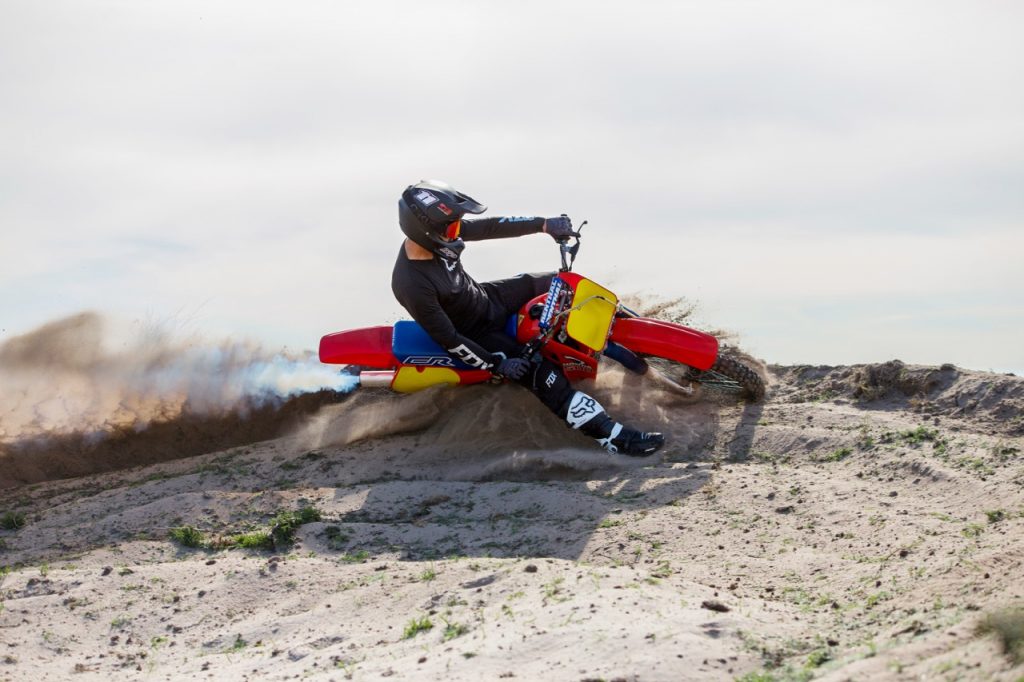
CHAMPIONSHIPS
More professional races and championships that year were won worldwide on Hondas than any other brand. In fact, that year the company scored a trifecta in the World 500cc Motocross Championship, when it was won by Dave Thorpe, followed by Andre Malherbe and the recently-deceased Eric Geboers on CR500s.
The AMA Motocross Championships were also dominated by Honda, with Bailey winning the 500cc title, Johnson the 250cc one and Micky Diamond winning the 125s. And of course, Johnson dominated the AMA Supercross Championship that year. Here in Australia, Craig Dack won the first of his four Mr Motocross titles on a Honda CR250.
HONDA CR250
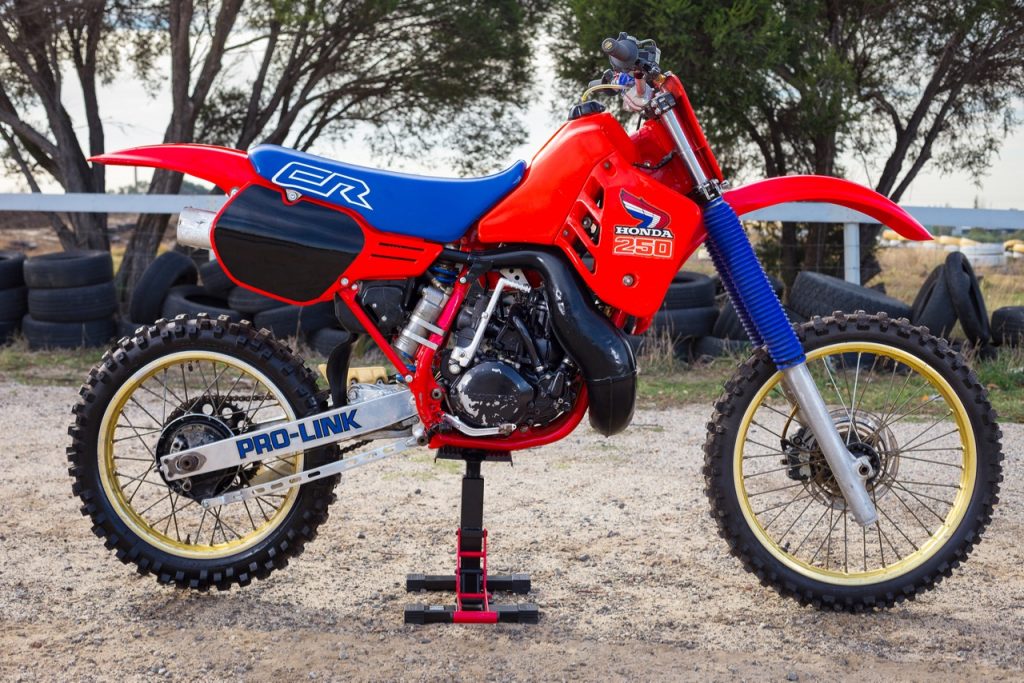
The CR250 was an epic machine through the mid-to-late ’80s and got even better between 1992 and 1996, the Jeremy McGrath era. The 1986 engine was smooth and tractable but still produced plenty of horsepower.
The chassis and suspension worked exceptionally well, making the bike a well-rounded package that handled most tracks with ease. The ’86 was also right at home in stadiums due to some nice bottom-end power and agile handling.
From the moment I hopped on this bike I felt a lot more at home. The power was really nice and strong … or did it just feel like that because I’d hopped off the 125? Nope, the power was definitely feeling okay, and quite easy to handle. That bloody slippery seat, combined with the extra horsepower, meant that I felt as comfortable as a three-year-old trying to ice skate.
These days we take for granted that you can plant your bum on the seat and it sticks where it lands.
The front brake also proved to be more of an issue on the faster 250 and I was already starting to prepare myself for the 500 and how difficult that was going to be to stop. Once I got into a bit of a groove on the CR250 I could really see how the stars of 1986 dominated on them. They just do everything really nicely. Even jumping was nice and comfortable on the 250 with that extra power to get you out of trouble if needed.
HONDA CR500

From the moment you sit on the 500 you know you’re on a big, tough bike and you’d better wind up the respect level. These engines weren’t designed with the words ‘smooth’ or even ‘user friendly’ in mind. As the years went by, the CR500 was smoothed out a tad by the engineers and, by the time I won the Australian championship in 1994 on a CR500 it was noticeably easier to ride.
We didn’t need to extract more horsepower out of the motor. In fact, we didn’t touch the cylinder with a porting tool. We just ran a thinner base gasket to add a bit of compression, bolted on a Pro Circuit muffler to go with the standard expansion pipe, richened up the jetting through the middle and Bob’s your uncle!
You had yourself a smoother version of the stocker that would pull a taller gear through corners. We started in third gear everywhere and didn’t miss a holeshot all year.
Unlike the Kawasaki KX500, the CR didn’t have a rotary exhaust valve. Which meant that the KX had less power off the bottom but more up top, making the Honda a lot easier to ride if you tractored it around. The Kwaka would win if you had a drag race but on a motocross track you very rarely got to use that top-end power on a 500. The Honda would finesse its way around a track and be very hard to beat with its torquey brute power.
From the moment I fired up the big girl for this test a bunch of memories came flooding back. The sound of a 500cc two-stroke is still one of the best in motocross. And a good 500 sounds amazing whether it is sitting there just [not] idling, or if it is being lugged in a very tall gear around a track by someone that knows how to ride one.
The only time a 500 doesn’t sound good is if it is being revved like a 250. In that case you will highly likely hear the vibration of the bike, and the rider’s teeth chattering over the top of that.
The ’86 model didn’t let me down in the power department. It was strong and fairly smooth but minus a big hit in the mid-range. If you’d never ridden a 500 then this bike could really catch you out. The brutal power, combined with weak anchors and, basically, no engine braking means that corners come up at a very rapid pace.
And if you miss your braking marker then you’re going over the berm. The tank looks huge when sitting on the bike but it didn’t seem to bother me too much. The suspension and chassis feel very similar to the 250 but it is the power that really separates these two bikes. Hovering between third to fourth gear everywhere, even in hairpin turns will make life nice and easy. And even though it feels like you’re about to stall the bike in those tight turns, if you persist with the taller gear you’ll be rewarded.
VERDICT
That was a very nice trip down memory lane for me. And even though I was only racing an 80cc when these CRs were current, I can still appreciate how much of a force they were. The 1986 range was terrific, and it came at a time when Honda was well and truly the superpower in motocross and supercross. Lee Hogan
Photos: MAX PETERS

